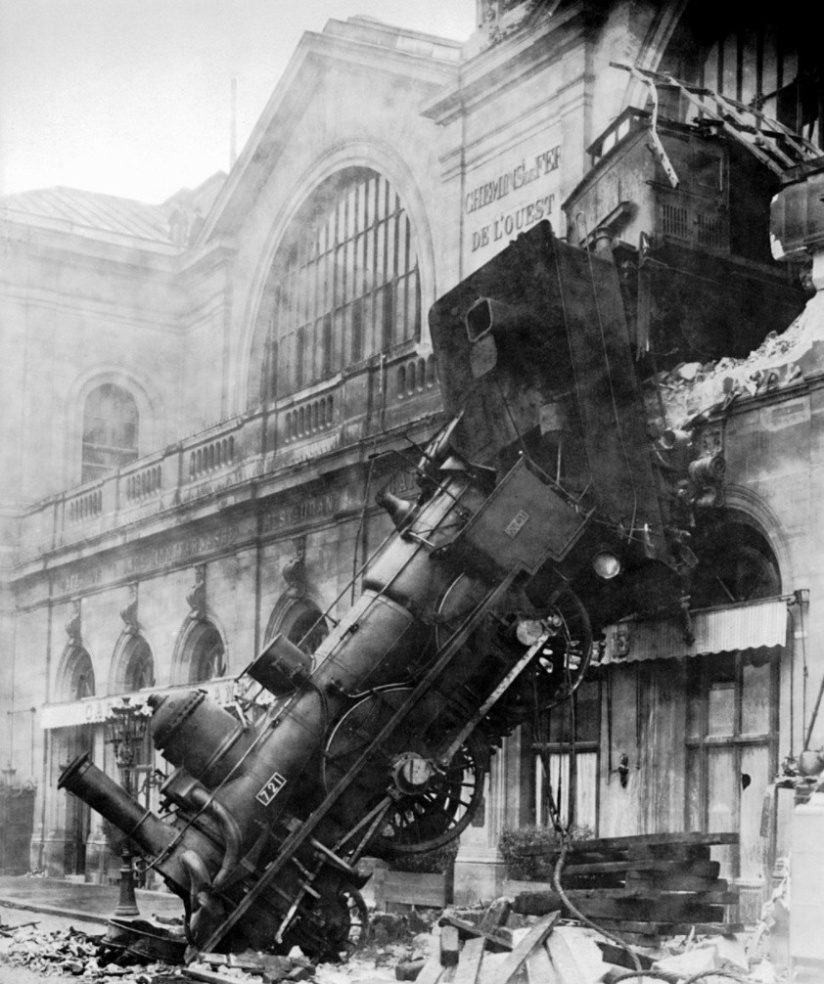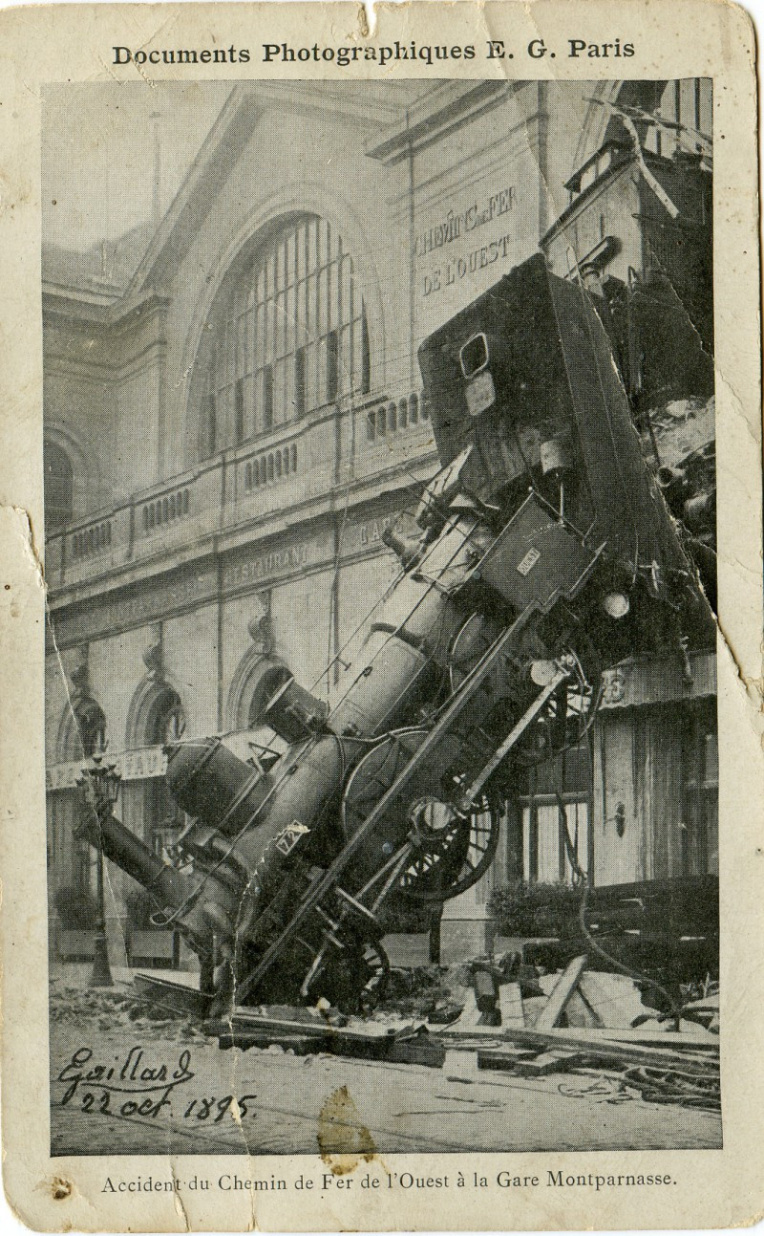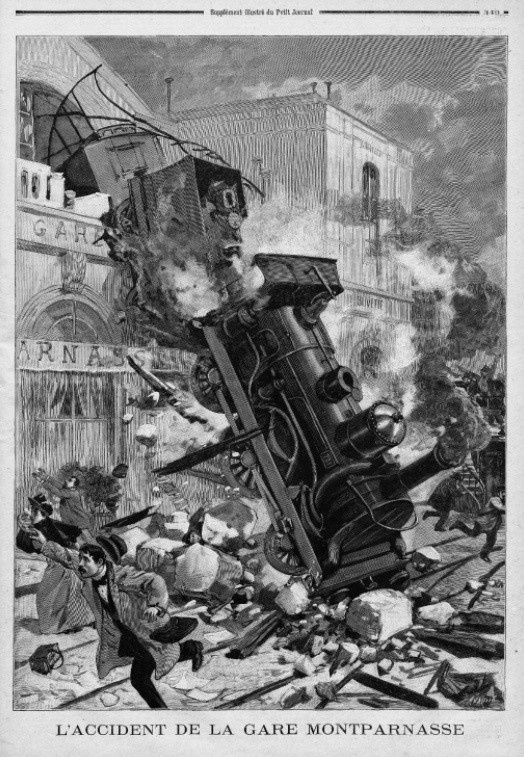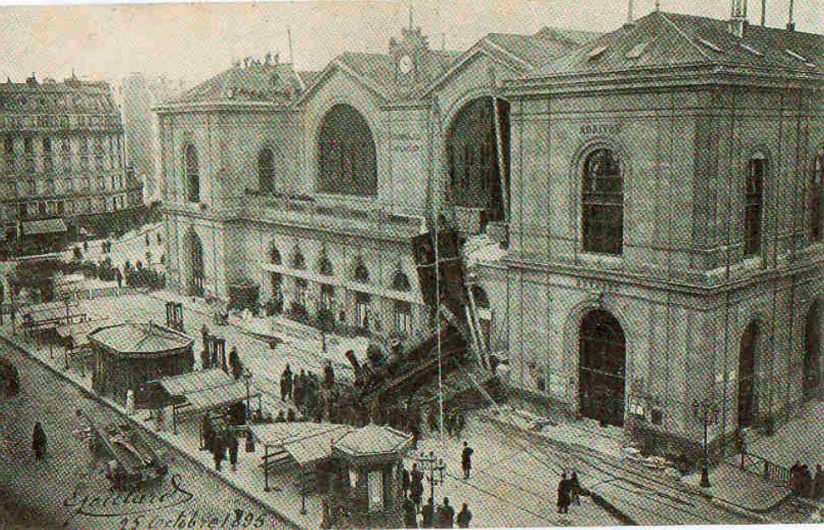On Tuesday October 22, 1895, a dramatic rail accident occurs at the Gare Montparnasse then called Gare de l’Ouest. Launched at 40km/h (24.85mph) the Paris-Granville train – packed with travelers – does not stop at the terminus and keeps traveling at high speed, destroying the façade of the building before ending on the Place de Rennes square further down.
Today still, this event is one of the most sensational and famous accidents in the history of rail in France, especially thanks to the many photographs shot shortly after the impact and widely spread in the French and international press. Fortunately, the dramatic event killed only one person despite major property damage.
Originally built by the Compagnie des chemins de fer de l’Ouest, the Gare Montparnasse – formerly known as the Gare de l’Ouest – has bene housing since the mid-19th century the departures and terminuses of many western lines towards Versailles-Rive-Gauche, Granville, Le Mans and even Nantes, Saumur, Niort and Bordeaux. From this time and until 1970, the station is set on the Place du 18 juin 1940 formerly called Place de Rennes, where the shopping mall by the tower is now set.
Once they have entered Paris through the neighboring cities of Vanves and Malakoff, trains access the Gare de l’Ouest via a trail passing through many streets in the city, level crossings and ending after crossing the avenue du Maine and the Boulevard Edgar Quinet viaduct in a two-way hall which six dead-end rails are set nine meters above the rue de Rennes and boulevard du Montparnasse crossroad.
But, on Tuesday October 22, 1895, the Express No.56 that left Granville at 8:45 a.m. to the Gare de l’Ouest is late. Towed by type 120 locomotive No.721 driven by mechanic Guillaume Marie Pellerin and driver Victor Garnier, the Paris-Granville is 7-minute late when stopping by Versailles-Chantiers.
The train – including ten wagons filled with 131 travelers including 3 deputies, three wagons packed with suitcases and one post wagon – has to catch up to make it on time, at 3:55 p.m. at Paris-Montparnasse.
When it arrived at the Gare Montparnasse, the locomotive managed to gain two minutes, but as it is traveling at high speed, it cannot stop in time. Despite several desperate attempts from the mechanic to lower the pace by braking, the engine enters the station hall speeding at 40km/h (24.85mph) in the scared eyes of Parisians. The mechanic and the driver have just the time to jump off the traveling train before it collides.
On October 22, 1895, shortly past 4 p.m., the Paris-Granville train pulverizes the wood bumper, crosses the station hall, furrowing the concrete embankment, destroys the façade of the building topped with a glass roof and ends up at the end of the station terrace. The speed of the train tilts the locomotive into the air that crushes ten meters further down, on the Place de Rennes, destroying the tramway station and a kiosk while the engine tender hangs in the air.
The accident could have had dramatic consequences given the attendance level of the Gare de l’Ouest, but it mostly caused property damage. Travelers inside the train are shocked but alive, and only five people are more or less severely injured, including a firefighter and the two drivers of the infernal machine. But a 39-year-old mother and newspaper seller settled in the tramway station, Marie-Augustine Haiguillard is killed by a piece of masonry that fell off of the station façade.
Passersby, some of them having cameras, flock to the Gare Montparnasse to notice the catastrophe. To contain crowds, twenty mounted city guards and a hundred foot guards are dispatched while the locomotive stays hanging in the air for four days before being removed. To see the show as close as possible, some curious people even buy a ticket for an affordable destination to access the platforms closed by the forces of order.
On October 25, the engine is hauled thanks to hoists and jacks set on a wagon pulled by 25 horses and carried to the Cail factory in the Javel area to be examined by mining engineer Lévy – expert named by the examining magistrate. As for the tender it is hauled back to the station and put back on rails thanks to an engine pulling it from the rails.
Spread by the entire French press and abroad, the event leads to mechanic Guillaume Marie Pellerin, who war working for the railway for 19 years, to be jailed for two months and to pay a 50-franc fine, and driver Victor Garnier to pay 25 francs of fine, although the latter claimed the accident was caused by failure of the Westinghouse-type air brake that stopped working once they crossed the rue du Château level crossing.
Find out more:
Location
Montparnasse station
Place Raoul Dautry
75015 Paris 15































